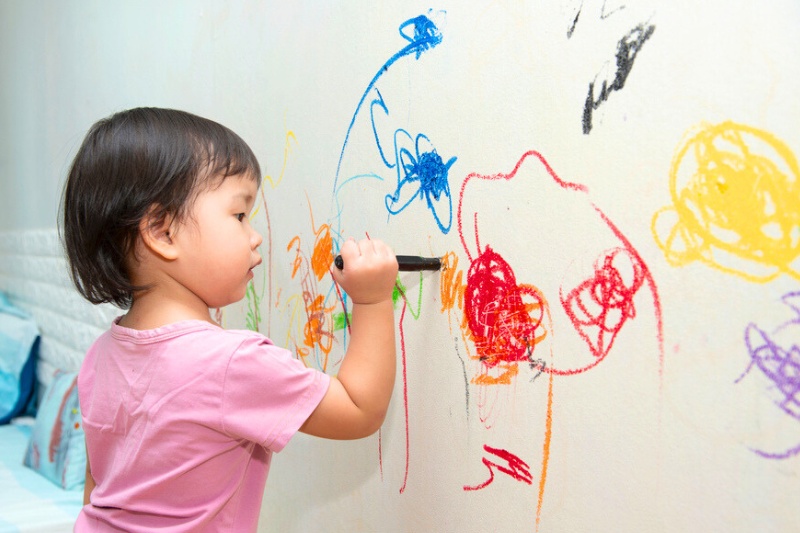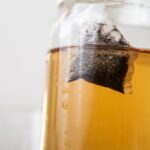Finding unexpected crayon artwork on your walls can be a common occurrence in households with young minds at play.
While the enthusiasm for self-expression is undoubtedly encouraged, walls are not the appropriate canvas for your little one’s masterpiece.
This leaves many parents asking the same question: How do you effectively remove stubborn crayon stains from walls?
If you’ve tried to remove crayon marks with no success, don’t worry—we have the solution.
This guide covers a range of proven methods and expert tips to help you bid farewell to those stubborn crayon stains.
Learn how to get crayon marks off walls and restore them to their original state here.
How Do You Remove Crayon from Painted Walls?
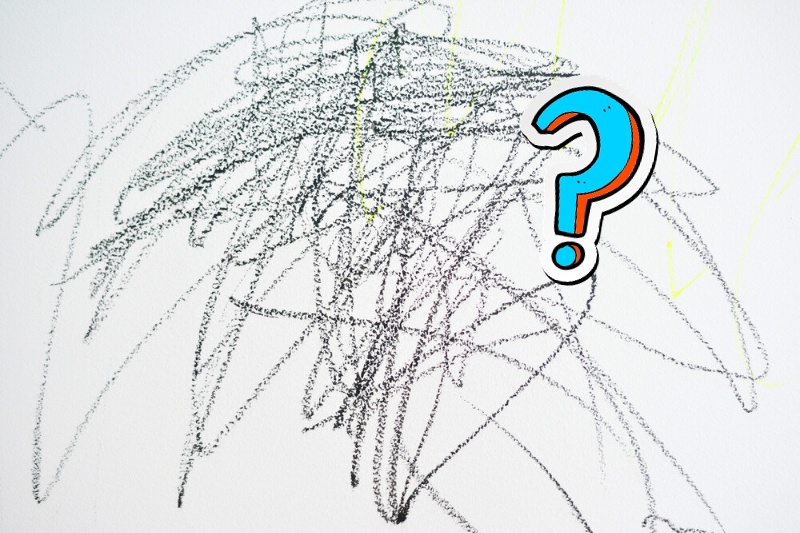
Getting crayon stains off painted walls isn’t always easy, at least not without damaging the paint beneath. Crayon marks are one of the hardest stains to remove!
However, don’t go straight in with a potent cleaning solution. Always start with the gentlest cleaning methods and work to more aggressive solutions if necessary.
The process below works from mild to more severe cleaning options, so go through the steps in order for the highest chances of success without damage.
Step 1: Scrape off excess crayon
Use a plastic scraper (such as an old credit card) or your fingernail to gently scrape off any excess crayon wax from the wall.
Do this with caution—excessive scratching can damage the surface of the wall, and you might pick away some of the paint if you’re not careful.
Step 2: Apply heat to the crayon mark
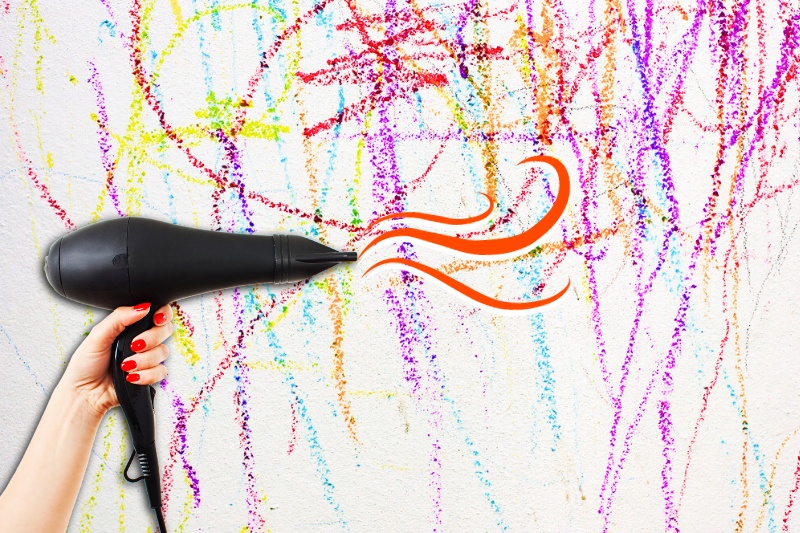
Use a hairdryer on a low setting to gently heat the crayon marks. This will soften the crayon wax, making it easier to remove in the following steps.
Keep the hairdryer moving back and forth over the crayon marks to avoid overheating the area, which can cause the paint to peel.
Step 3: Wipe with a cloth
Once the crayon wax is softened, use a clean cloth or paper towel to wipe away the melted crayon from the surface of the wall.
You may need to apply some gentle pressure, but be careful not to scrub too hard, as it may damage the paint.
Step 4: Use a mild detergent
If any crayon marks are left behind after wiping, mix a solution of warm water and a mild detergent (like these sensitive washing-up liquids) in a bucket.
Dampen a microfibre cloth or sponge with the solution and gently rub the stained area. Rinse with clean water and pat dry.
Step 5: Try other stain removal methods
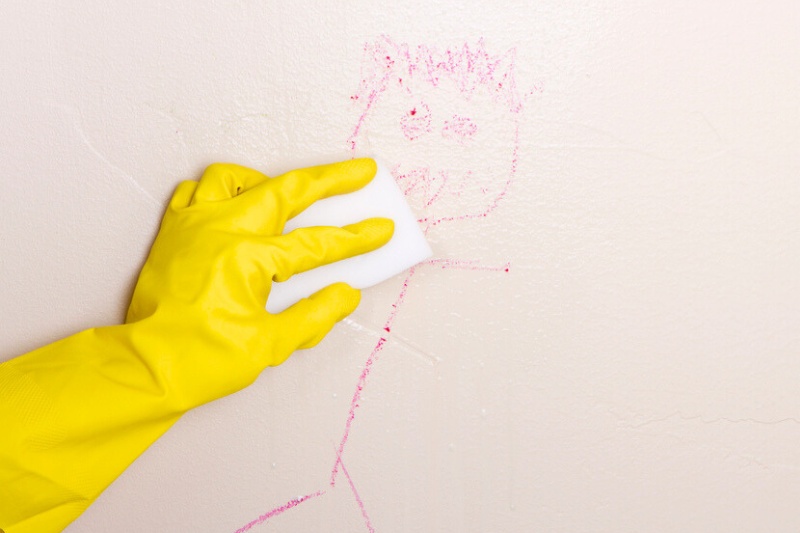
If the crayon stain persists, you can also try using rubbing alcohol, bicarbonate of soda, toothpaste, magic erasers, lemon essential oils, or a commercial stain remover.
Below is a quick explanation of how each of these stain removal methods works:
- Rubbing alcohol: Dampen a clean microfibre cloth or cotton ball with rubbing alcohol and gently rub the crayon marks. When using rubbing alcohol, make sure to ventilate the area, as the chemical releases fumes which can be harmful when inhaled.
- Bicarbonate of soda: Make a cleaning paste by mixing bicarbonate of soda and water. Apply the paste to the crayon marks and gently scrub with a soft cloth or sponge. Rinse the wall with clean water afterwards.
- Toothpaste: Non-gel, white toothpaste can also work at removing crayon marks from painted walls. Apply a small amount of toothpaste to a soft cloth or sponge and gently rub the crayon marks. Wipe clean with a damp cloth to remove the toothpaste residue.
- Magic eraser: Magic erasers like Flash Ultra Power Magic Eraser are a popular choice for removing crayon marks. Wet the magic eraser and gently scrub the crayon marks. Be careful not to scrub too hard, as it may remove paint from the surface of the wall.
- Lemon essential oil: Lemon essential oil can help dissolve crayon marks. Apply a few drops to a cloth and gently rub the marks using circular motions and gentle pressure. Afterwards, wipe clean with a damp cloth.
- Commercial cleaners: There are also commercial cleaning products designed specifically for removing crayon marks from walls, such as Dr Mechmann Stain Devils, which you can buy from Amazon. Follow the manufacturer’s instructions for the best results.
Step 6: Paint over the crayon
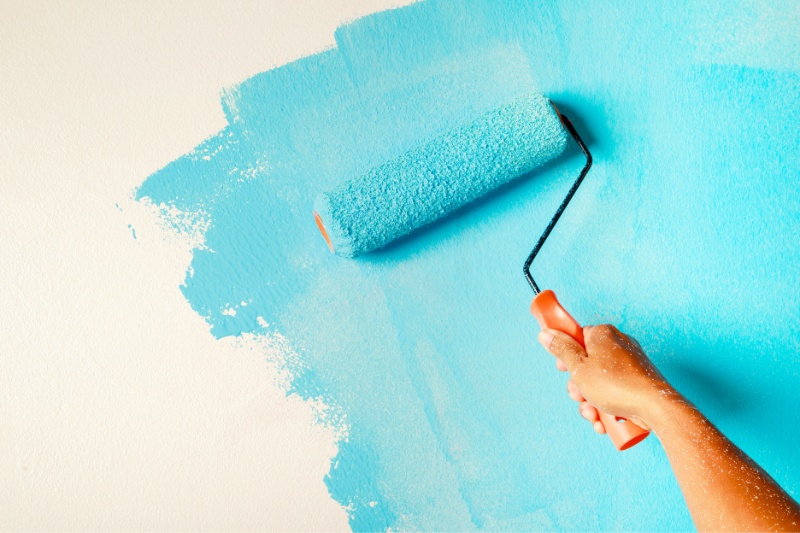
If the crayon stain remains after trying various cleaning methods, you may need to repaint the affected area to cover your child’s masterpiece.
Before doing so, make sure the wall is clean and free of any residue that may have been left behind during the cleaning process.
Can You Paint Over Crayon on Walls?
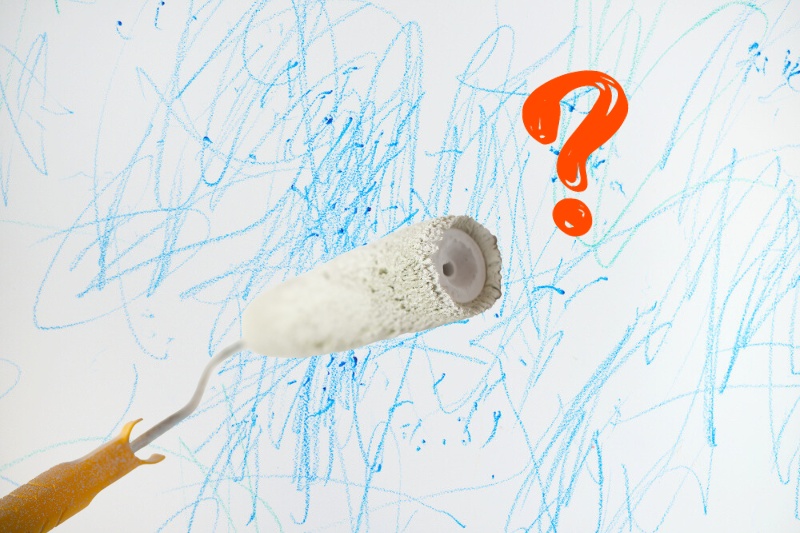
You can paint over crayon marks on the walls. However, it is best used as a last resort because it can be time-consuming—several coats of paint are typically required, especially if you have light-coloured walls.
That said, painting over crayon marks is a practical solution if you’ve tried to remove the crayon marks but have been unsuccessful.
Here are the steps to follow:
- Clean the wall: Before painting, it’s essential to clean the wall to remove any loose crayon wax, dirt, or residue. You can use a mild detergent solution such as washing-up liquid and a sponge or cloth to clean the wall. Rinse with clean water and allow it to dry thoroughly.
- Sand the wall: If there are any rough or uneven areas where you’ve removed crayon marks or the wall has other imperfections, consider lightly sanding the surface with fine-grit sandpaper. This helps create a smoother surface for the new paint.
- Prime the wall: Apply a coat of primer to the wall. Primer helps create a consistent surface for the paint and can prevent the crayon marks from bleeding through the fresh paint. Use a primer appropriate for your paint type (e.g., latex primer for latex paint).
- Paint the wall: Once the primer has dried, you can paint over the crayon marks. Use the same type of paint that is currently on your wall, whether it’s latex or oil-based. If you’re unsure about the paint type, consult with a paint professional.
- Apply multiple coats: Depending on the colour and coverage of your existing paint, you may need to apply multiple coats of paint to ensure the crayon marks are completely covered. Allow each coat to dry before applying the next.
- Finish with a top coat: Once the paint has dried and the crayon marks are no longer visible, you can finish with a topcoat or clear sealer to protect the painted surface and provide a uniform appearance.
Keep in mind that if you’re painting over crayon marks on a wall with a high-gloss or semi-gloss finish, you may need to sand the entire wall or use a specific bonding primer to ensure good paint adhesion.
Additionally, when choosing paint, try to match the colour and sheen (e.g., matte, satin, or gloss) to the rest of the wall for a consistent look.
Can Crayon Stains Be Removed from Walls?
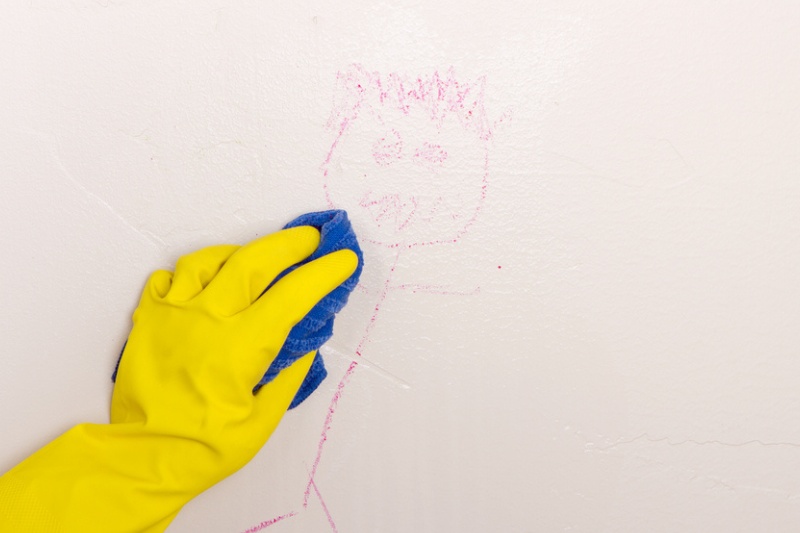
You’ll be pleased to hear that crayon stains on walls can often be removed from walls.
However, success rates depend on various factors, including the type of wall surface, the kind of paint or finish used, and how long the crayon has been on the wall.
If any of the following situations apply, the crayon stains marks might be impossible to remove:
- Textured walls: If your walls have a textured surface (such as textured paint or wallpaper), crayon stains may be more challenging to remove. This is because the crayon can become embedded in the texture.
- Oil-based paint: Crayon stains on walls painted with oil-based paint can be particularly stubborn because the wax from the crayon can bond with the paint. Attempting to remove the stain may damage the paint or require repainting.
- Old and set-in stains: Crayon stains that have been on the wall for an extended period or have become deeply set into the paint may be difficult to remove altogether. In such cases, the crayon wax may have penetrated the paint, making it hard to lift without causing damage.
Using harsh or abrasive cleaning methods or the wrong cleaner can sometimes worsen crayon stains or damage the wall.
If previous attempts to remove crayon marks were done incorrectly, it may also make future removal attempts less effective.
Therefore, try our method above for the best chances of successful stain removal – both now and in the future.

Hannah has a passion for cleaning. She worked her way around Australia by cleaning hostels in exchange for free accommodation and used her cleaning skills to bag a job as a chalet host for a luxury ski company in France.
